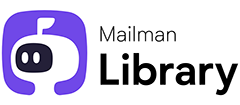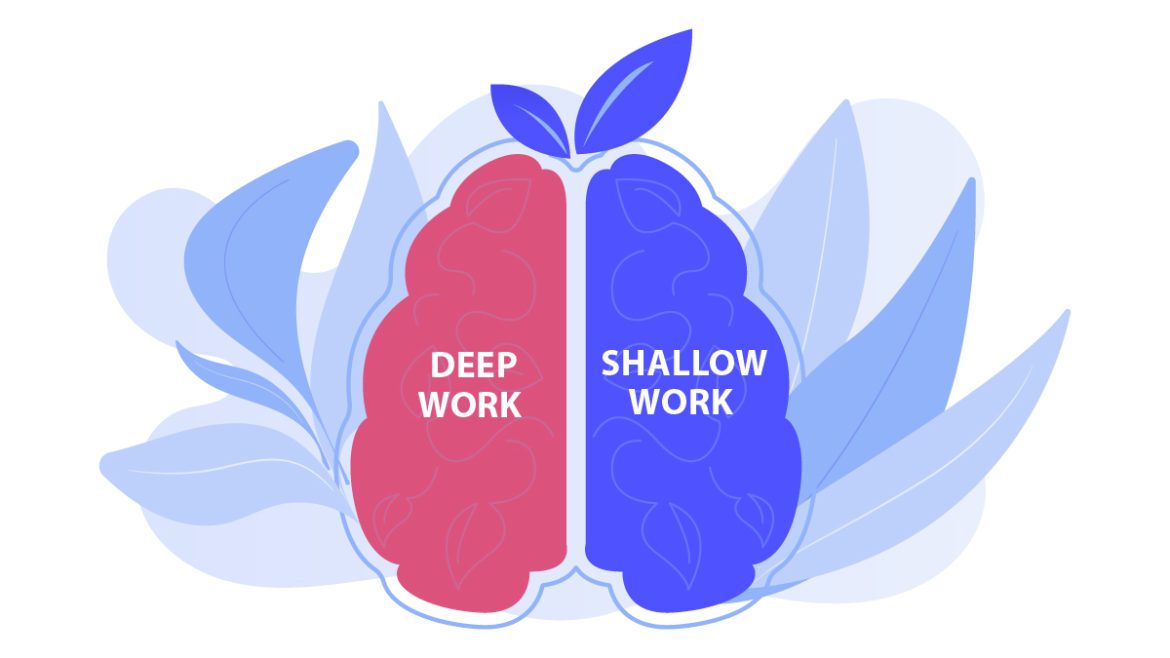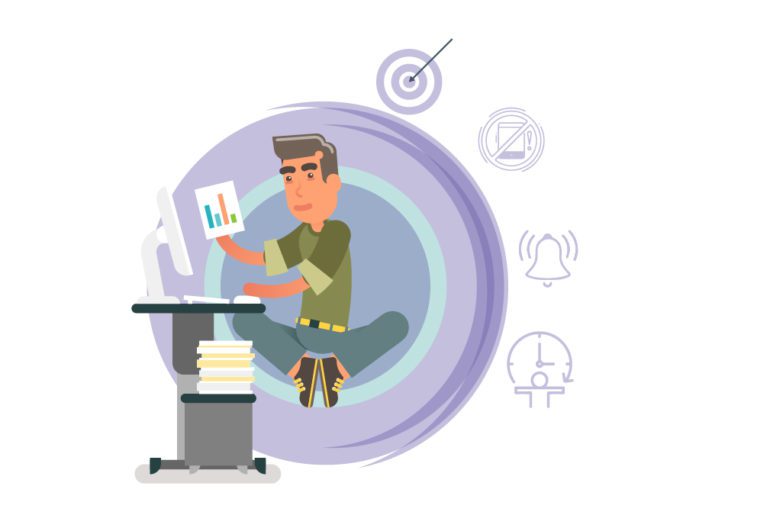As fast as our lives are, the more tasks we need to get done. With this comes the intense pressure to perform to one’s expectations. And when these expectations are not met, it results in disappointment and fatigue. A prime solution to this is to get those productivity levels up again through the understanding of deep work and shallow work. But when one considers deep work vs shallow work — what’s better for us?
Deep Work vs. Shallow Work
The main difference between deep work and shallow work is that deep work is focused, uninterrupted, and undistracted work that demands maximum cognitive function. On the other hand, shallow work is any logistical or administrative task that can be done even while distracted. Shallow work doesn’t create value and is easy to replicate.

Let’s dive deep into both deep and shallow work:
What is Shallow Work?
‘Shallow work’ is exactly how it sounds. It’s work done where a lot of concentration and focus is not needed. These tasks count as menial tasks but are important to the everyday happenings of a workday.
How to do it?
Shallow work might seem unimportant among deep work vs shallow work, but it is the little things that make the world run. Hence, shallow work is done best with some ground rules:
- Keep a track of the time spent on each shallow task
It is necessary to understand where most of our time wasted goes. In the quest to increase time efficiency, keeping a track of our activities is a must. Most shallow tasks do not need a lot of time and one should use this caution as a tool for time management. - Schedule these tasks throughout the day
Combining all menial shallow work tasks into one chunk to be completed together can further ruin time productivity. Shallow tasks like email management should be scheduled at different intervals. Mailmanhq is our top pick as your tool of productivity. - Unplug to focus better
Tasks requiring shallow work like replying to emails, social media, etc can be a cause of distraction when we compare deep work vs. shallow work. Moreover it can be tempting to go back to these quick shallow tasks to derive that quick sense of achievement. Focus better on your tasks at hand by turning all notifications off and using this tactic as a tool for time management.
What is Deep Work?
‘Deep work’ is a more involved form of working at a task when we consider deep work vs shallow work. Deep work requires one to be more focused and develop a resistance to distractions while at work. These tasks usually are of high value and are worth the time and effort put into them.
How to do it?
The success of a deep work session depends on how well the rules of the session are. Some essential strategies for deep work are:
- Schedule deep work sessions
Deep work is a result of one’s discipline. Scheduling a session of thorough deep work in a day, combined with other shallow tasks is a popular way of destressing after a deep work session. Another way is to schedule only deep work for a couple of days to take care of a significant task. Either way, between deep work vs shallow work, scheduling deep work beforehand is vital to the amount of work one does. Thus this leads to an increase in productivity. - Remove all possible distractions
The main characteristic of deep work is the sheer concentration that goes into it. This focus is but a result of the absence of distractions. When one sketches the rules for a deep work session, one must also put all distractions to rest. Turning off notifications, and keeping your phone and other unnecessary devices away while working are some ways to keep distractions at bay and help in increasing productivity.
Some other effective measure one can undertake is to change one’s place of work. If you work in a modern office setting, try booking a conference room for the duration of your deep work session. If you work remotely, perhaps changing the room you work in can trick your mind into focusing better to differentiate between deep work vs shallow work. - Relax and rewind
Deep work, though rewarding, can be exhausting too. Continuous sessions of deep work can be taxing on one’s mind and body. This is why it is necessary to make sure that one takes enough time to relax too. Taking breaks between deep work sessions on the same day is essential to restore one’s energy and better increase productivity.
These breaks also allow you to destress by indulging in other hobbies or doing anything that gives you joy. But one must understand that these breaks shouldn’t serve the purpose of a break from the ‘punishment’ of work, but rather a reward. This encourages the brain to delve deeper during deep work and deliver better results.
Deep work vs shallow work- what’s your pick?
The methods of deep work vs shallow work are different for different people and for different purposes. Various email management tools like Mailman can help take care of shallow work while productivity tools like Toggl can help improve deep work. It is up to us to choose which path we need to take to accomplish a particular goal. But as different as the two are, discipline and consistency form the basis of them all.
FAQs
Deep work requires a lot of focus; thus, the quality of work done is valuable and skill-based. Shallow work, on the other hand, requires lesser focus and hence its outcomes are mediocre.
Shallow work is a term coined by Cal Newport, which includes tasks that can require no focus and can be done in a state of distraction.
Cal Newport suggests that the upper limit of deep work every day should be not more than 4 hours as our attention span then diminishes.
Deep work is measured in two terms:
1. Lag measures: The amount of output your deep work has produced.
2. Lead measures: The habits that you control to ensure better deep work.




